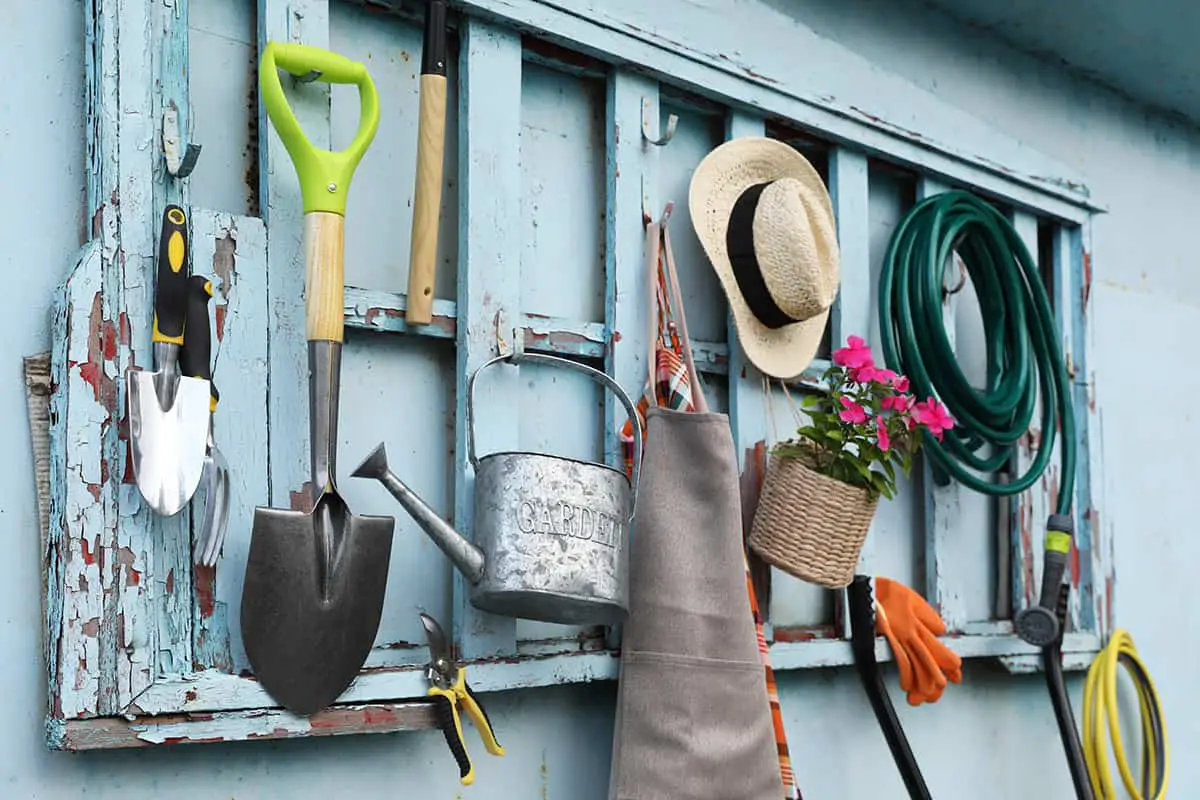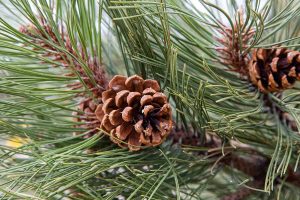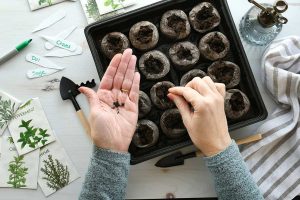The smooth cut of a spade through the soil is a gardener’s early sign of spring. Yet, as the season progresses, that spade can become caked with dirt and rust, turning an easy task into a chore. Regular maintenance of garden tools not only eases your work but also prolongs the life of the tools themselves.
Here are important tips to keep your garden tools in top condition so that they’re always ready when you are.
Table of Contents
- Regular Cleaning Is Key
- Sharpening Blades
- Rust Prevention Strategies
- Handle Care and Repair
- Proper Storage Solutions
- Lubricating Moving Parts
- Disinfecting Your Tools
- Dealing With Rusty Tools
- Tool Sharpening Equipment
- Seasonal Maintenance Checks
- Replacing Worn-Out Parts
- Battery Care For Power Tools
- The Right Way To Clean Power Tools
- Organizing Your Garden Shed
- Maintaining Garden Hose And Accessories
- Safety Gear For Tool Maintenance
- Recycling And Upcycling Old Garden Tools
- Creating A Maintenance Schedule
Regular Cleaning Is Key
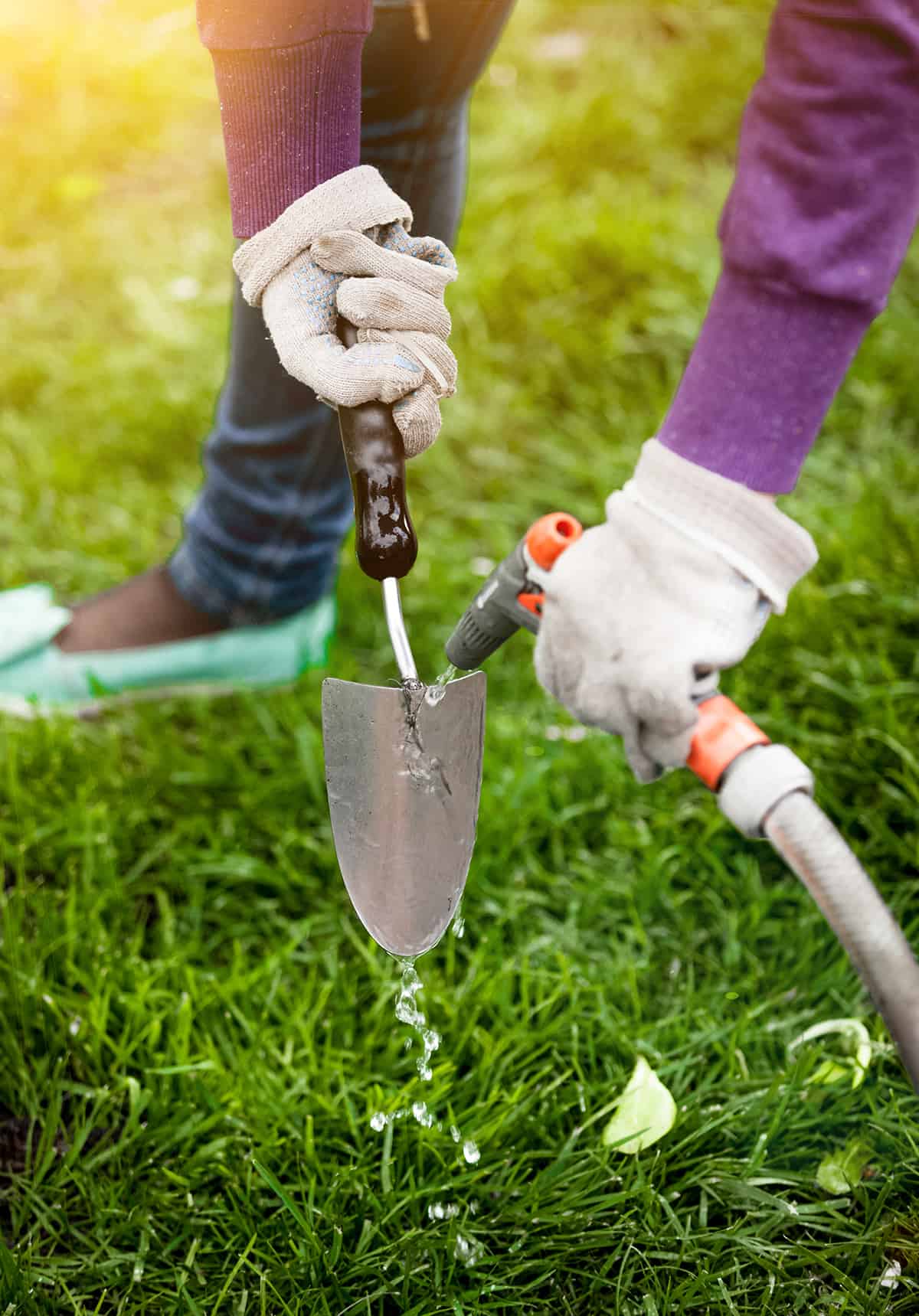
Regular cleaning of garden tools prolongs their life. It ensures they work properly. Each time you use shovels, shears, or rakes, dirt and sap collect on them. This debris can cause tools to deteriorate faster.
You should rinse your tools with water after each use. Stubborn dirt may need a stiff brush for removal. Dry your tools thoroughly to prevent rust. Cleaning after every use helps avoid the spread of diseases among plants.
For sharp tools like pruners and shears, maintaining their sharpness is essential for clean cuts. A sharp blade also requires less effort to use. Wipe the blades with an oily rag to keep them lubricated and protected from rust.
If your tools have wooden handles, it’s crucial to keep them smooth and splinter-free. Sand them down if they start to feel rough. Apply linseed oil to preserve the wood.
For certain tools, especially pruners and loppers, disinfecting is necessary. This step is vital when dealing with diseased plants. You can use a diluted bleach solution or rubbing alcohol for this purpose. Remember to rinse the tools well after disinfecting to prevent corrosion.
Store your clean, dry tools in a dry, covered space, such as a shed or garage. Hanging them up can prevent damage to their edges and keep them out of the way. Proper storage defends against weather and accidental damage.
Sharpening Blades
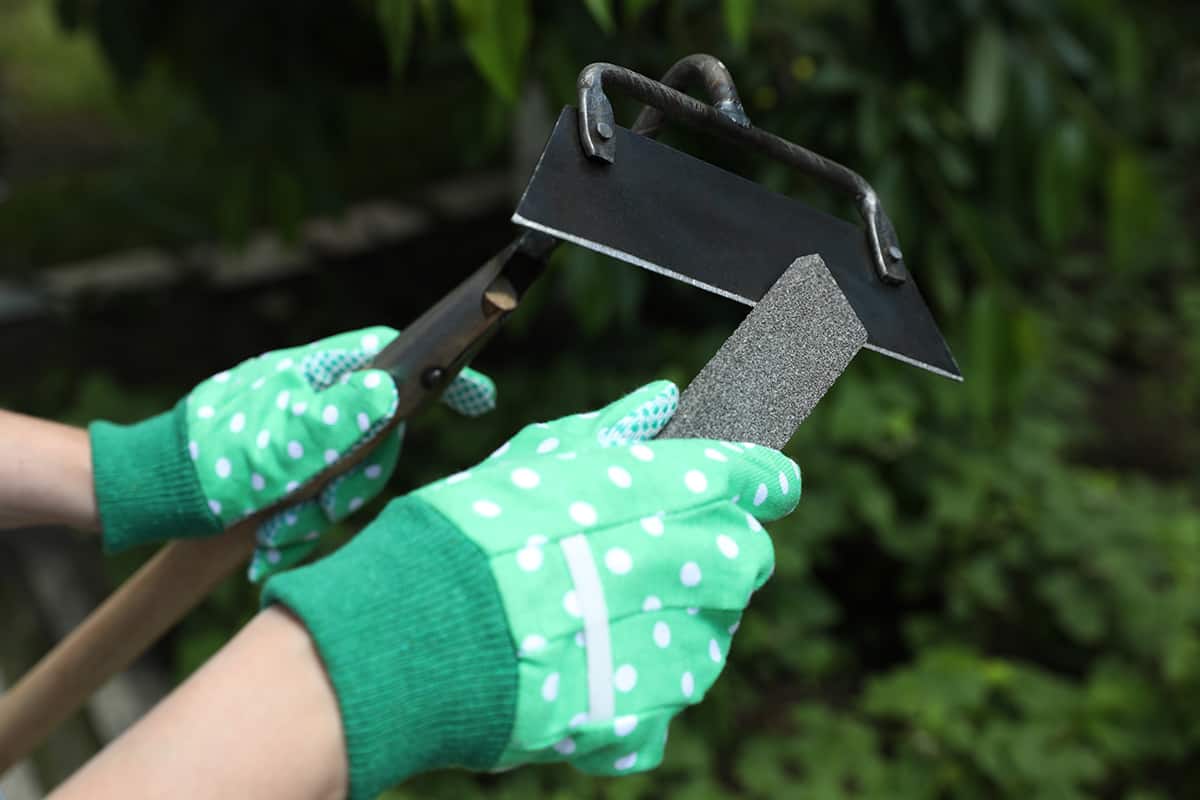
A sharp tool makes clean cuts, which are healthier for your plants. To begin, ensure you have a clean surface and that all dirt and rust are removed from the blades.
Your choice of sharpening tool will depend on the blade size. For small tools, use a handheld sharpener or a stone. Larger blades often require a bench stone or a grinding wheel. Always maintain the blade’s original angle to preserve its effectiveness.
For safety, secure the tool firmly before sharpening. Use long, steady strokes while moving the sharpener across the blade’s edge. This technique helps you achieve an evenly sharpened blade. Apply oil after sharpening to protect the blade from rust and ensure smooth operation.
Regular maintenance, including tightening any loose bolts, will complement your sharpening efforts. By keeping your garden tools sharp, you not only extend their lifespan but also enhance your gardening efficiency.
Rust Prevention Strategies
Start by keeping your tools clean. Dirt and moisture are rust’s allies. After use, clean every part. Use a brush for dirt and a rag for moisture. Then, dry them well.
Ensure your tools stay dry. Store them in a dry place. Wet conditions lead to rust. If they do get wet, dry them promptly. You can protect metal surfaces against rust. Apply a lubricant, like WD40, to the surface. This seals the metal and helps prevent oxidation.
Finally, tightening your tools helps. Screws and bolts that are tight keep moisture out. Use the right lubricant for the joints and blades. Your tools’ manual often lists recommended products. Oiled tools resist rust better.
Handle Care and Repair
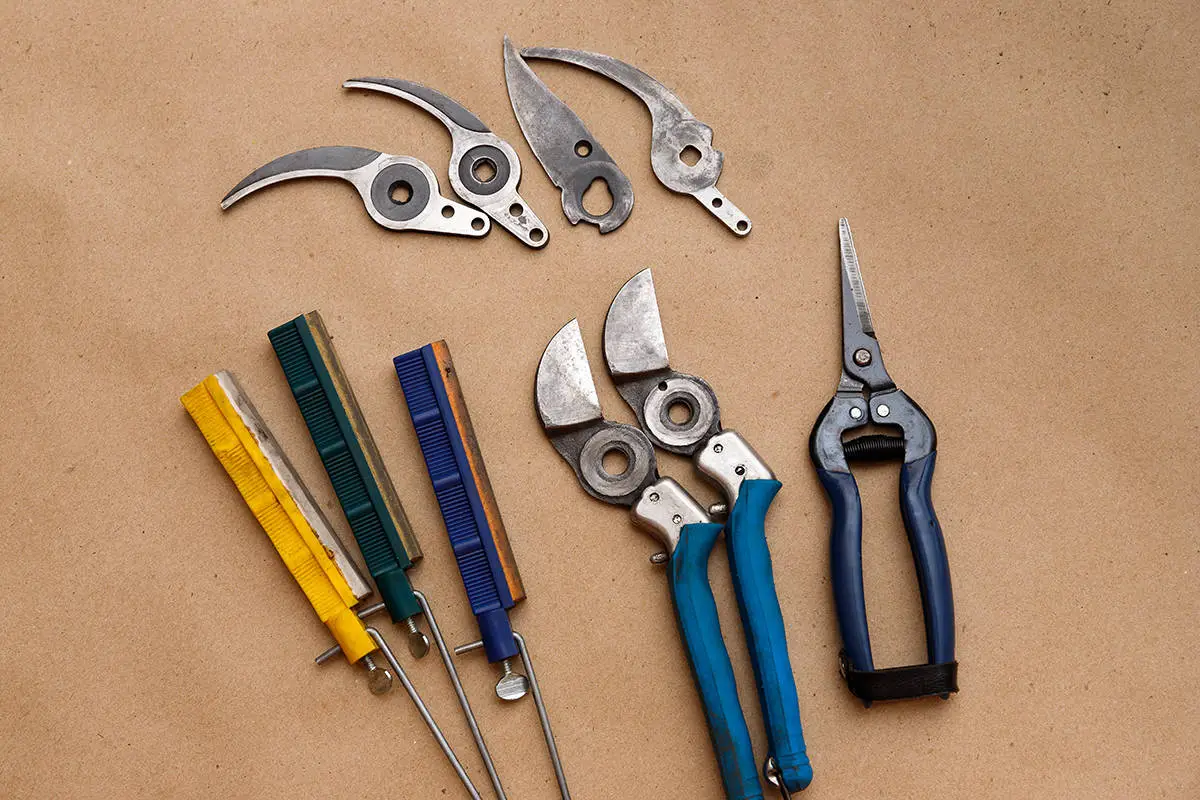
Wooden handles weaken when exposed to elements. To protect them, clean them with soapy water. Rinse and dry completely. Then, apply linseed oil to preserve the wood.
Sometimes handles break. Don’t worry, you can fix it. Purchase a replacement handle that matches your tool. Follow the instructions to attach it securely. Ensure the fit is tight to avoid accidents.
For metal handles, check for rust. If you spot any, sand it off gently. Metal handles can corrode, so keep them dry. Store tools in a dry place to prevent rusting.
Proper Storage Solutions
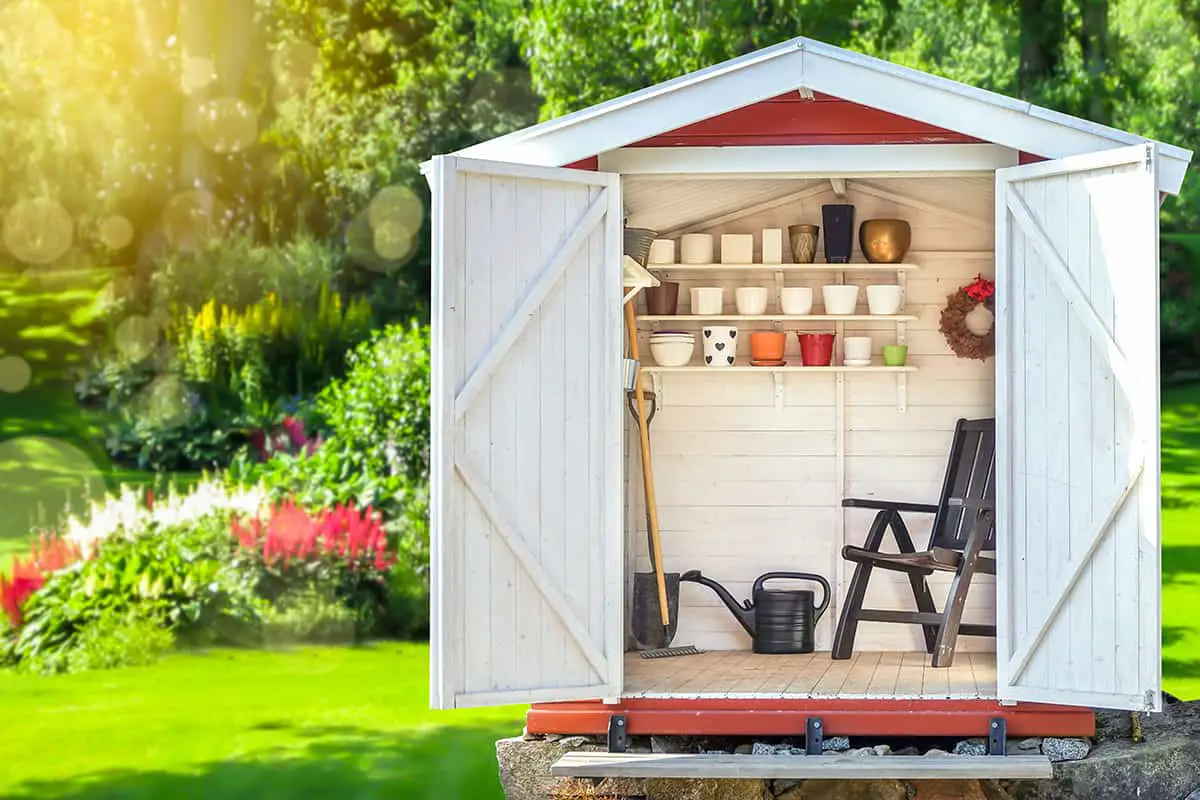
Good maintenance includes proper storage of your garden tools. Keep them clean, sharp, and corrosion-free. This way, you ensure they’re ready for work when you need them. Here’s how to store your garden tools correctly.
Dry Environment: Store your tools in a dry place. Moisture leads to rust, and rust can severely shorten a tool’s useful life. If you store tools off the ground and in a dry environment, you help prevent rust and keep handles from warping or rotting.
Accessibility: Organize your tools so you can reach them easily. Hang long-handled tools on a rack. This prevents damage and keeps edges sharp. Shelves or racks are suitable for smaller tools. You save time when tools are organized and within reach.
Hoses and Cords: Properly coil garden hoses and cords to prevent kinks. Use hose reels or hangers to avoid damage and prolong their lifespan. Store them out of direct sunlight to prevent degradation.
Lubricating Moving Parts
Smooth operation and longevity hinge on proper lubrication. First, clean these areas thoroughly. Remove all dirt, debris, and rust that can inhibit movement and cause wear.
Next, apply a lubricant. Oils designed for garden tools are your best choice. They protect against rust and ensure moving parts work seamlessly. For pruners and shears, focus on the pivot point. A few drops will suffice. After applying, open and close the tool several times. This distributes the oil evenly.
Always wipe away excess lubricant to prevent dirt accumulation. Lastly, store your tools in a dry place. By doing so, you’ll guard against corrosion and prolong your tools’ effectiveness.
Disinfecting Your Tools
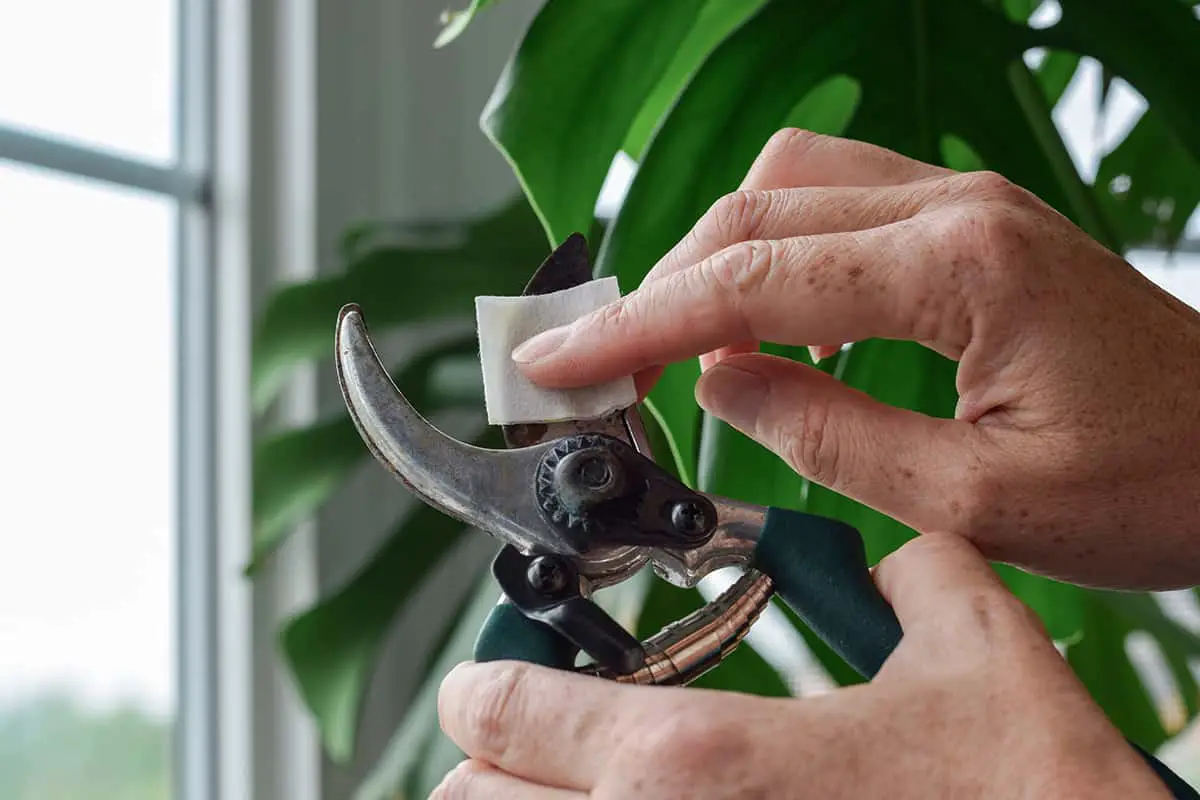
Disinfecting your garden tools is essential to prevent the spread of plant diseases. It guarantees that your tools are safe to use on all plants. Begin by cleaning dirt off with soap and water. After cleaning, a disinfection step is needed, especially if you’ve worked with sick plants.
For effective disinfection, immerse your tools in a bleach solution. Soak the tools for at least 30 seconds to kill pathogens. However, bleach can be corrosive over time.
Alternatively, disinfect tools with 70% alcohol as this Wisconsin horticulture article advises. Alcohol is less harsh on tools and just as effective against most plant pathogens. After the disinfection process, rinse your tools with water and dry them thoroughly.
Storing tools in a clean, dry place is imperative for maintaining their condition.
Dealing With Rusty Tools
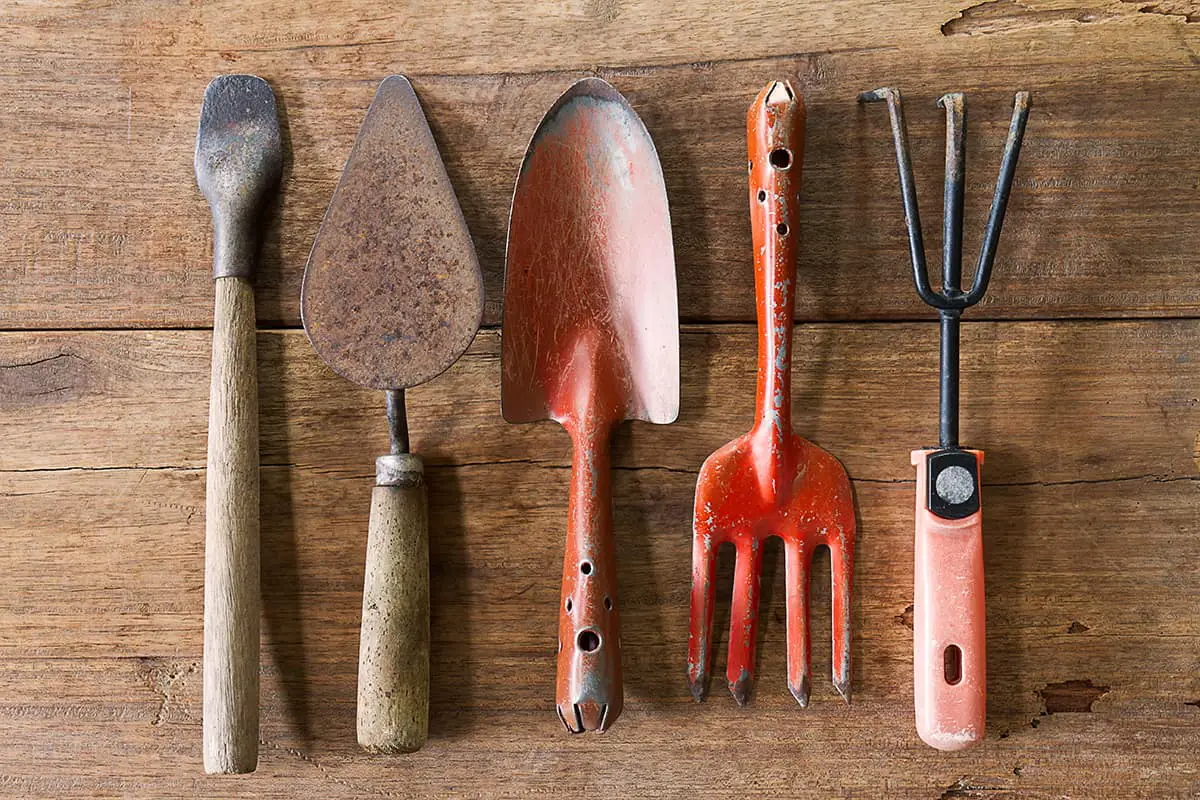
When your garden tools have rust, you need effective ways to restore them. Clean tools are crucial for your gardening tasks. Start by removing dirt and debris. Use a wire brush for this step.
Sometimes rust can be stubborn. If the rust persists, employ a rust remover. Rinse the tool afterward.
For tougher rust problems, consider a vinegar soak. Submerge the rusty tool in vinegar for 24 hours. Then scrub off the loosened rust with a brush.
After rust removal, drying the tools is essential. Any moisture left can lead to more rust. Ensure each tool is completely dry.
To prevent future rust, apply a light oil or natural oil such as linseed or camellia oil to the metal parts of the tool.
Tool Sharpening Equipment
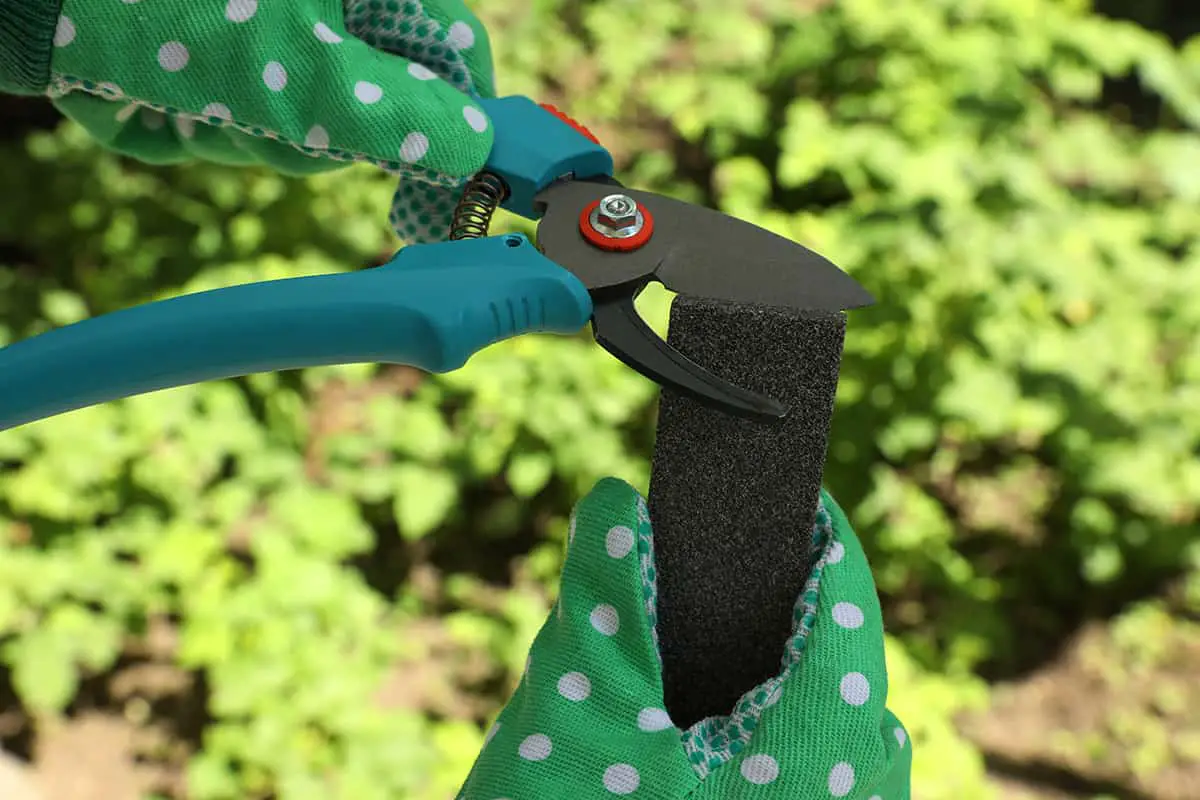
To maintain your garden tools effectively, you need the right equipment for sharpening. Sharp tools make gardening tasks easier and result in healthier plants. Properly sharpened edges cut cleanly, reducing the risk of disease in plants.
Sharpening Files: These are essential for maintaining tools like shovels and hoes. Choose a flat mill file to sharpen large, flat blades. The motion is straightforward: you push the file across the blade’s edge.
Whetstones: For pruners and shears, whetstones are your best bet. They come in different grits. A rough grit reshapes the edge, while a fine grit hones it. Use them with light oil to lubricate the stone’s surface.
Bench Grinders: Heavier sharpening jobs, such as ax blades, call for bench grinders. They quickly restore the edge. Make sure the grinder is secure on a stable surface and the tool is held at the original angle of the blade.
Sharpening jigs can help you keep a consistent angle when sharpening tools like chisels. Attach the jig to the tool, and it guides the motion against your sharpening stone or file.
Seasonal Maintenance Checks
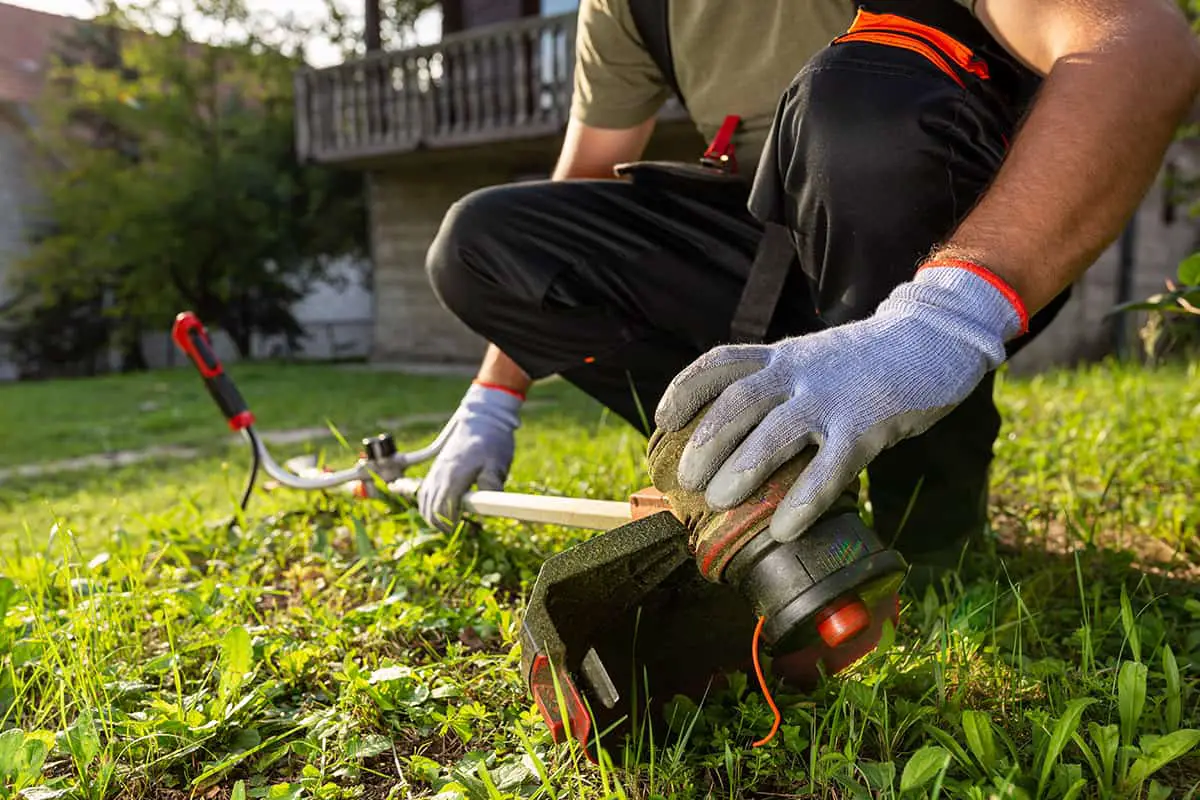
Garden tool maintenance ensures longevity and performance. As seasons change, regularly inspecting your garden tools is vital. You’ll keep tools in optimal condition by performing these checks.
Spring calls for preparation. Clean all tools, from shovels to pruners, using a wire brush or a damp rag. Sharpen cutting edges and apply oil to prevent rust. Look at handles for splinters or breaks — they may need replacement.
During Summer, tools are in heavy use. Keep them clean after each use to prevent soil buildup. Mid-season sharpening keeps cutting tools effective. Check for loose parts or damaged handles.
Come Fall, clean tools thoroughly before storage. Remove rust and apply a coating of oil for protection. Tighten any loose screws or bolts.
Winter demands less tool use but don’t neglect them. Inspect stored tools for rust or damage. If you missed Fall maintenance, now is the time to clean and oil your tools. This prevents deterioration during storage.
Replacing Worn-Out Parts
When maintaining your gardening tools, you might need to replace parts that are beyond repair. Recognize when a component is worn out. Watch for signs like cracks, rust, or a failure in the tool’s function. A handle that wobbles or a blade that doesn’t cut cleanly might indicate it’s time for a replacement.
Find the right parts for your tools. Manufacturers often offer spare parts. Check the manual that came with your tool for part numbers and ordering information. You can also visit manufacturer websites to find parts. Make sure to match the part exactly to ensure proper fit and function.
You can replace some parts at home with basic tools. For example, changing a shovel handle or a secateur blade usually requires just a screwdriver or wrench. Follow the instructions provided with the spare part. Sometimes, videos from the manufacturer can guide you through the process.
For complex repairs, consider professional help. Some tools have intricate mechanisms. A professional can ensure the repair is done correctly. This approach can extend the life of your garden tools and prevent damage or injury from improper assembly.
Battery Care For Power Tools
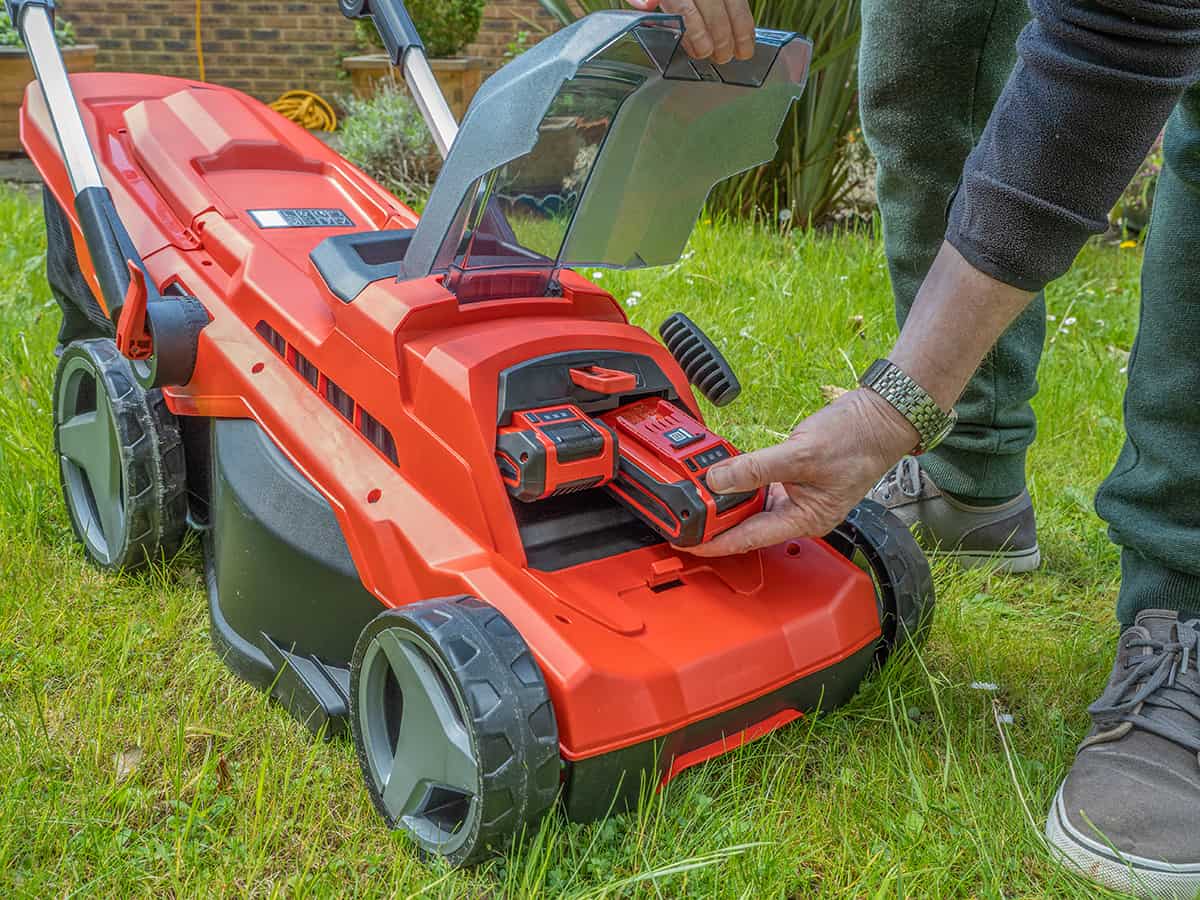
When handling power tools, battery maintenance is crucial. You ensure longevity and performance through proper care. Start by storing batteries at room temperature. Extreme heat or cold reduces their life.
Charge your batteries according to the manufacturer’s instructions. This prevents overcharging which can harm battery life. Use the charger that came with your tool for best results.
Keep the battery clean. Wipe off dirt and debris with a dry cloth. A clean connection between the battery and tool ensures optimal function.
If you notice a decrease in performance, recalibrate your battery. This resets the power gauge and can help extend its life. Check the manual on how to recalibrate specifically for your tool’s battery brand and model.
Replace batteries showing signs of damage. Swollen, leaking, or cracked batteries cannot be repaired and pose safety risks. Dispose of them following local regulations.
The Right Way To Clean Power Tools
Knowing how to clean power tools keeps them in good shape. When you clean your power tools, you ensure they work well and last longer. You can start this process right after each use. This way, dirt doesn’t build up, and your maintenance is simple.
First, unplug the tool or remove its battery. Safety is your top priority. Wipe the exterior with a damp cloth to remove dust and dirt. Don’t let water get into the motor or wiring. If the tool has air vents, clear them with a soft brush.
For tools with blades or bits, like a drill, clean them separately. Apply a rust inhibitor if you see any rust beginning to form. Make sure the blades are dry before reattaching them to prevent rust.
Lastly, lubricate moving parts if the manufacturer recommends it. Use the recommended product to ensure smooth operation. Store your cleaned power tools in a dry place to further protect them from rust and damage. Proper storage and routine care keep your tools ready for the next job.
Organizing Your Garden Shed
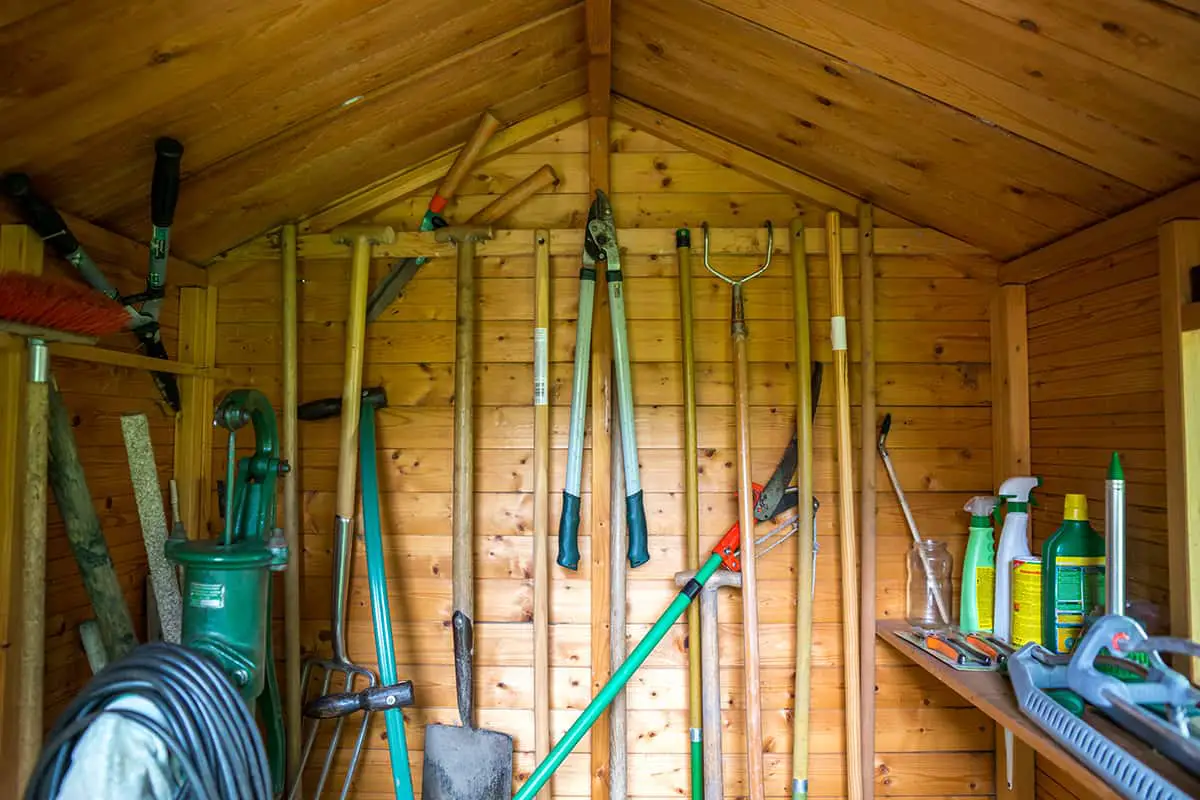
When you organize your garden shed, you ensure that your tools stay in prime condition. Find a place for each item. Store long-handled tools like rakes and shovels on hanging racks. This protects them from moisture and keeps them off the ground.
Small tools benefit from wall-mounted pegboards. Outline each tool’s shape to easily spot missing items. Think of your shed as a tiny workshop. It should be tailored to your gardening style. Sheds vary from simple storage units to elaborate spaces. Choose one to match your home and garden’s design, like Florida Gardening Solutions suggests.
Caring for metal tools involves more than storage. After use, clean and oil them to prevent rust. An oil sock is a simple tool for this. It involves stuffing a sock with sand or rags, tying it, and then applying vegetable oil.
A garden shed should not only be organized but also inviting. Include a space to sit and plan your garden tasks. With everything in its place, you’ll save time and prolong the life of your tools.
Maintaining Garden Hose And Accessories
Start by protecting it from the elements. During the winter, drain it completely to prevent any water from freezing inside, which can cause damage. Coiling the hose loosely allows for natural expansion and contraction, avoiding kinks and cracks.
It’s important to regularly check your garden hose for leaks. Small punctures can be repaired with hose repair kits, while larger issues may necessitate replacement. Additionally, maintaining connections by replacing washers can prevent leaks at the spigot or nozzle.
Storage also plays a crucial role. Hang your hose on a rounded hook or reel to maintain its shape. Sharp bends can weaken the hose over time. Keep accessories such as nozzles and sprinklers clean and dry when not in use. This prevents the growth of mold and rust.
Cleaning your hose and accessories helps prevent the spread of disease in your garden. Use a mixture of water and a mild detergent to clean the hose exterior. Rinse off soil and debris before rolling it up. For accessories, a quick rinse after each use can stop dirt buildup. Disinfect them regularly, especially when dealing with sensitive plants.
Safety Gear For Tool Maintenance
When maintaining garden tools, safeguard yourself first. Essential safety gear protects you from injury. Before you start, gather your safety equipment.
Wear sturdy gloves to shield your hands from cuts. Gloves also offer a better grip on your tools. Clear goggles are crucial; they prevent debris from damaging your eyes. Long-lasting ear protection is necessary when using loud machinery. With the right gear, you minimize risk.
Your clothing should also protect you. Choose long sleeves and pants to cover your skin. Wear closed-toe shoes with slip-resistant soles. Don’t overlook a dust mask, especially if you’re sensitive to allergens. Safety comes first in tool maintenance.
Check your gear regularly. Look for signs of wear or damage. Replace items as needed to ensure your continued safety.
Recycling And Upcycling Old Garden Tools
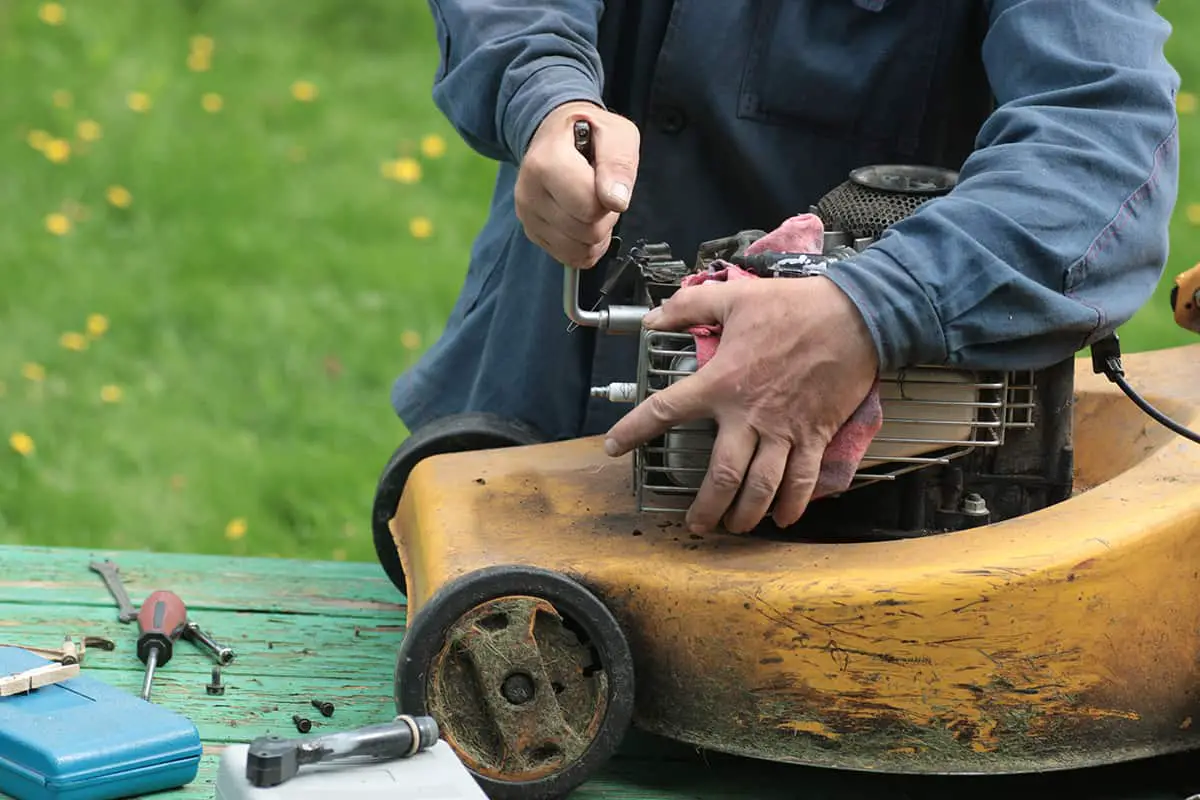
When your garden tools reach the end of their useful life, consider recycling and upcycling. These methods extend the lifetime of materials. Upcycling transforms old tools into new, useful items or decorations. Recycling turns materials into something new.
Recycling involves processing old tools. You can take metal parts to a recycling center. This process reduces waste. Your old tools become raw materials for new products.
Upcycling is creative reuse. Turn a spade into a quirky plant marker. Make a wind chime from old hand tools. Use broken handles as stakes for climbing plants. This approach adds character to your garden.
Remember to remove any rust and clean your tools before upcycling. For rusted tools, vinegar soaking followed by a scrub with a wire brush is effective. Once cleaned, your old tools are ready for a second life.
Keep the environment in mind. When upcycling, choose non-toxic paints and finishes. Aim for durability to ensure your new creations last. Your creativity can give old garden tools renewed purpose.
Creating A Maintenance Schedule
Effective garden tool maintenance ensures your tools last longer. To begin, allocate specific days for tool care. Set aside time for inspection and cleaning. Start by initiating a weekly routine. Clean dirt and debris after each use. Check for rust monthly. Sharpen the blades seasonally.
Your schedule might look simple at first. For instance, reserve ten minutes after gardening to wipe tools down. Use oil on moving parts every two months. Aim for a thorough maintenance check before winter storage.
Remember, consistency is key to garden tool care. Adjust the schedule as you understand each tool’s needs more fully. Keep track of your maintenance in a calendar. Note the dates when you perform each task.
Over time, you’ll see the benefits. Your tools will stay sharper and cleaner. This leads to easier, more effective gardening. Stick to your maintenance schedule for the best results. Always store your tools in a dry place to prevent rust.
